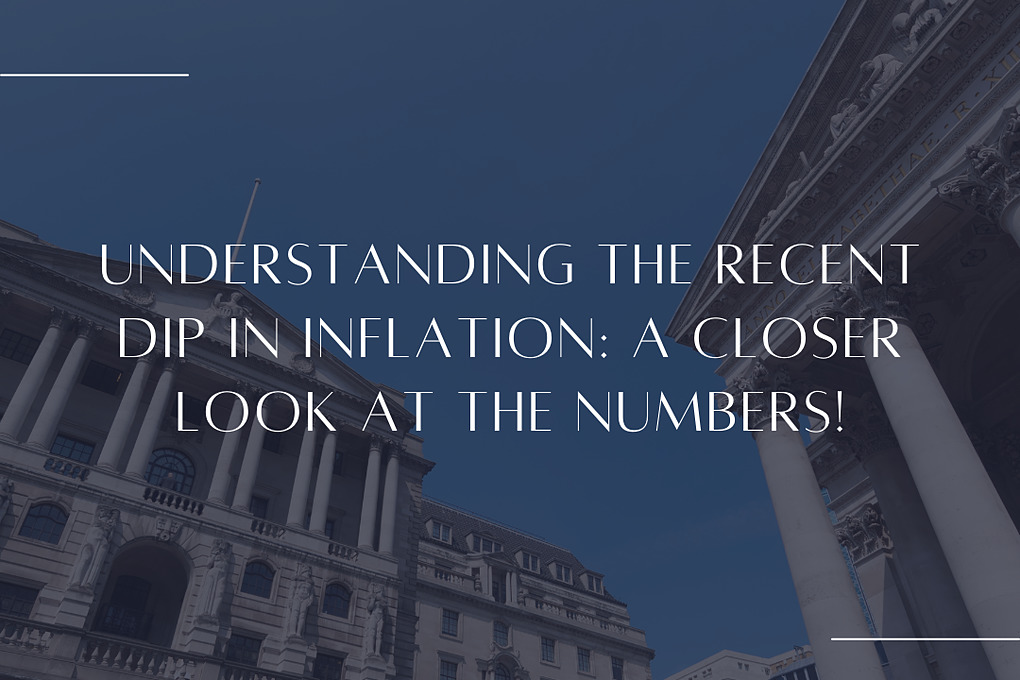Understanding the Recent Dip in Inflation: A Closer Look at the Numbers

- Sep 21st 2023
Inflation, the relentless force that affects our daily lives, recently made headlines as it dipped slightly in August. The Consumer Prices Index (CPI) reported that inflation fell to 6.7% in the 12 months leading up to August, a small decline from the 6.8% rate observed in July. While this decrease may seem modest, it carries significant implications for the economy and households across the UK.
Economists Surprised by the Dip
One noteworthy aspect of this development is that it took many economists by surprise. Expectations were leaning towards a slight increase in inflation due to rising fuel prices, which had seen a 5 pence-per-litre hike in just one month. However, the opposite occurred, indicating that inflation might be less predictable than previously thought.
Core Inflation Also Sees a Decrease
It's essential to delve deeper into the inflation figures to understand the complete picture. Core inflation, which excludes energy, food, alcohol, and tobacco, also experienced a decline, settling at 6.2%. This suggests that the slowdown in inflation isn't limited to just a few sectors but is more widespread.
Government's Targets and Reactions
Chancellor Jeremy Hunt responded to the inflation figures, stating that "the plan is working." However, he acknowledged that inflation remains "still too high." The government has set ambitious targets: bringing the main rate of inflation down to 5% by the end of the year, with a longer-term goal of 2%. Achieving these targets is crucial for economic stability.
Impact on House Prices
In addition to inflation, the Office for National Statistics (ONS) released data on house price growth. House prices increased by 0.6% in the 12 months leading to July, a notable slowdown from the 1.9% increase seen in the months preceding June. However, it's important to note that various sources provide differing perspectives on house price trends. While the ONS reports a slight decline from a peak in November 2022, Nationwide's figures indicate a 5.3% decrease in average house prices in August compared to the previous year. These disparities stem from variations in data collection methods, particularly regarding cash and buy-to-let purchases.
Government's Battle Against Inflation
Prime Minister Rishi Sunak has set a key priority for 2023: halving inflation by the end of the year, aiming to reduce it to 5.3%. This objective was introduced when inflation was at a high of 10.7% in the final quarter of 2022. While August's CPI figures show progress, there remains uncertainty about whether the government's target will be met. The Bank of England's projection that inflation will reach 5% by year-end offers some reassurance in this regard.
The Fiscal Picture and Borrowing
Chancellor Hunt emphasised that the slight drop in inflation doesn't mean a borrowing spree. The government's borrowing fluctuates from month to month, and the pandemic has significantly increased national debt. For instance, in July this year, the government borrowed £4.3 billion, marking the fifth-highest borrowing figure for July since records began in 1993. In the broader scope, the government borrowed £130.6 billion during the 2022 financial year, which was £9.4 billion higher than the previous year. Managing government borrowing is crucial to controlling interest rates and maintaining economic stability.
The Complex Nature of Inflation
In conclusion, a dip in inflation, even if modest, carries significant implications for the UK's economy and households. It's important to note that when inflation falls, it doesn't mean prices are decreasing; rather, they are rising at a slower rate. Moreover, inflation varies across sectors, with transport becoming cheaper while food remains notably more expensive.
The recent developments in inflation and house prices highlight the complex nature of the economy, where multiple factors and variables interact. While the government's plan to combat inflation seems to be making progress, the future remains uncertain, and continued monitoring and strategic adjustments will be necessary to achieve long-term economic stability.








